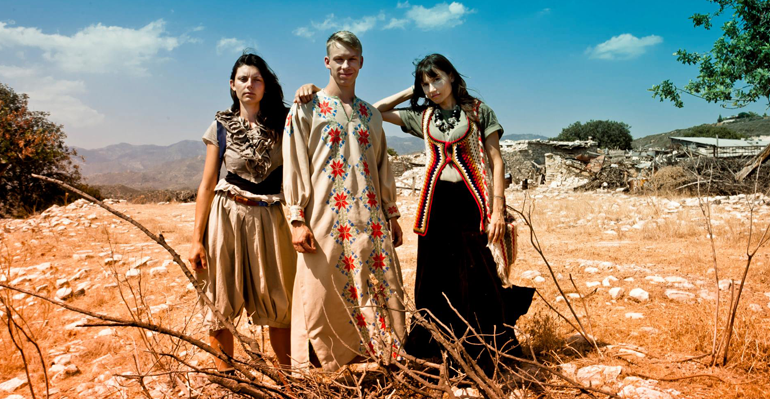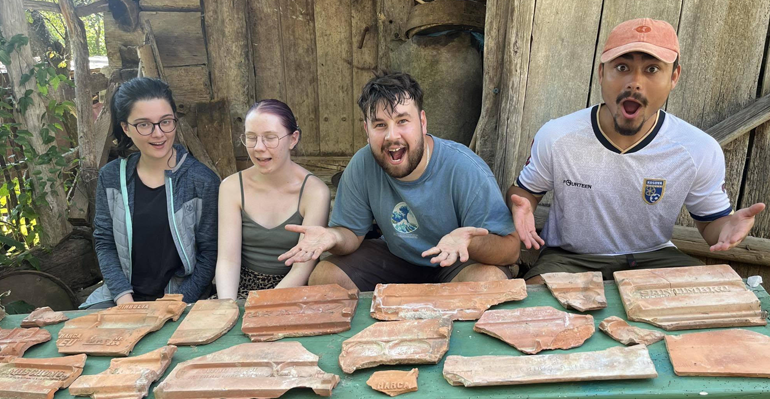
Sacred tombs of well-known historical characters, places of pilgrimage even after many millennia
Introduction:
At various times over the last 1,500 years, Cyprus has been both a very welcoming country in terms of other religions but also a bastion of Orthodox Christianity, especially as the Holy Crusades of the 12th century came to a close. There are many hundreds of revered and much visited tombs and for Christians, literally thousands of saintly relics (bones).
In the past, wars were fought over the possession of such relics by European kings and queens. Less complex, plainly presented but very poignant, are Islamic tombs and graves, some are damaged and poorly looked after, bearing testament to inter-ethnic conflict.
There is still a belief that visiting toms and relics can be curative and spiritually uplifting, so acts of pilgrimage are common-place. Come to Cyprus to visit special tombs and see important relics but also enjoy the rich and multi-layered cultural landscape of remoter and less known villages, meet holy representatives and choose optional experiences like painting an icon, eating a unifying meal or stringing a rosary.
The ‘Tombs Heritage Trail’ in Larnaca and Limassol districts is offered by Kato Drys Community Council and their stakeholders, Mola Culture Factory. Find the link to the map of the trail below, or contact the Mola Culture Factory for more details.
What you'll discover:
- How tombs were conceived for important religious personages
- The function of shrines as places of pilgrimages
- The stories behind those interred and what made them so important
- Abandoned and deliberately damaged graveyards – the way forward
- The process of offering votives as thanks for cures
- How certain personages are linked to certain ailments.
- Holy relics, their significance in the past and today.
This offer is a three-day trail that takes suitable visitors (sensitivity is needed) to:
The Old Olive Mill – Mola Culture Factory, Pano Lefkara
The Old Olive Mill – Mola Culture Factory is an outreach centre for Kato Drys Community Council. It is where induction and orientation occur. If participants do add-on skills training, this is the venue. The Mill has many icons to inform about saints and prophets.
Lefkara Islamic Cemetery
The Islamic Cemetery is located on the eastern edge of the Lefkara village, near the former Turkish Cypriot area. Inside a well-maintained stone wall, the cemetery’s graves have unfortunately been damaged over time and show signs of desecration.
Saint Lazarus Church in Larnaca
Stop three is about 30 km from Pano Lefkara. Here, you’ll walk through the three-aisled church, where the builders cleverly incorporated Roman pillar capitals into the structure purely for decoration rather than for support. You’ll then descend into the ancient crypt to visit the tomb of St. Lazarus.
Hala Sultan Tekke mosque and tomb of Umm Haram, Larnaca
This is a beautiful site adjacent to the salt lake. European flamingos are resident there from November to April each year. Friday is a good day to visit to catch the weekly prayers. The Imam will read some of the service in English if we announce ourselves. Umm Haram was the wet nurse and companion of the Islamic prophet Muhammad, and this makes the site very holy for Muslims – third after Mecca and Medina.
Tomb of Saint Riginos, Fasoula
Saint Riginos’ tomb is in Fasoula village, next to the Saints Riginos and Orestis Chapel. His grave’s exact location was revealed to a priest when the Saint appeared to him through a dream. The Saint’s relics are connected to a series of miracles. His tomb is under the auspices of the Department of Antiquities. According to Oral Tradition, the Saint had protected the village when it was in danger. This is why he is the patron Saint of the village of Fasoula.
Timios Stavros Monastery, Omodos
Timios Stavros Monastery (The Monastery of the Holy Cross) is one of the oldest and most historic monasteries in Cyprus. It was founded centuries ago (before St. Helen’s arrival in Cyprus in 327 AD) above a cave where a miraculous cross was discovered. Today, it serves as both a spiritual and cultural heart of the region, inviting visitors to explore its museums, admire sacred treasures, and participate in one of Cyprus’s most vibrant religious fairs—the annual Feast of the Holy Cross.
Why this trail matters:
- The story and the experience will help to stimulate the local economy in a sustainable way
- Visitors will learn more about the local cultural landscape that few tourists see.
- Discovery by tourists, from Cyprus and abroad, will raise awareness of the need for recognition and protection of patrimony, as it applies to tombs and relics.
Those taking part will see that respect for ancestors, of whatever religion, is important.
Heritage Trail Map:
Heritage Trail Details:
- Length (km):
- About 195 km
- How it could be undertaken:
- Driving
- Special notes (clothes, equipment, weather, etc.):
- Between the end of October and the end of March, rain is possible and a light raincoat is needed plus a warmer jumper of fleece. At all times wear a hat, even in winter the sun can burn and in Spring, Summer and Autumn, sunburn is commonplace. You should also wear sun cream of over factor 40, especially if not between end of October and end of March. If walking you need strong shoes with good ankle protection. Do not walk into the ‘maquis’; it is prickly and unyielding.
- Safety guidelines:
- Follow the rules about clothing and staying on the track. Cyprus has a few quite dangerous examples of wildlife but injuries are extremely rare. There is one very venomous snake, a blunt-nosed viper. Snakes lay in the sun to warm up, you spot them on the track; stamp your feet and they slither away. A black whipsnake is common and is not venomous. None of the 6 types of lizards that you might see, are any problem. Do not randomly turn over stones because there are venomous centipedes and scorpions but their bite is not worse than a bee sting. Do not walk off into the maquis, in case you come suddenly upon a snake. All in all, the wildlife is fascinating and if you take care, is not a threat.
- Guiding:
- This trail can be completed alone, or with a guide.
- To book a guide, please contact The Old Olive Mill – Mola Culture Factory
Contacts for more details:
Mola Culture Factory
https://www.facebook.com/molalefkara/
Address: Saint Onoforus 1, Pano Lefkara, 7700, Larnaca District, Cyprus
Phone: +357 99739320
Email: martinclark6@aol.com
Quests / Chances to be creative:
Quest 1: 'Painting an icon in the Eastern Orthodox style'
This is a two-day course, with breaks for lunch and tea/coffee. The venue is the Old Olive Mill (Mola Culture Factory). We use previously sourced used wood from old buildings, such as shutters, door panels and planks. We have as a stakeholder a father and son carpentry firm, Panikos and Nikolas. The teacher is Bulgarian artist Aylin Myumyunova, who qualified in London and through the Cyprus College of Art, and was previously teaching at three Cypriot art institutions. The style involves applying white spatulin onto the sanded wooden surface and then layers of paint, dark shades first. For those who are not Christians, contemporary persons such as Elvis Presley and Kate Bush have been selected, also Buddhists and Muslims have selected Prophets and Deities.
Quest 2: 'Stringing a rosary'
The process can be seen as the creation of an item of jewellery or making a rosary for use in a scripture-based prayer in the Christian faith. Mary, the Mother of Jesus, asked us to pray the rosary as a meditation on the mysteries of Jesus’ life. Each prayer corresponds to a bead on a string of beads also called a rosary. We will make a simple rosary with cord and beads, a more complex rosary made with a chain, and a single-decade rosary, or sacrifice beads. We use sustainable beads and locally cast silver crosses, or any ornament preferred. We will make a visit to local silversmiths to see silver being cast. We use bead threading trays.


